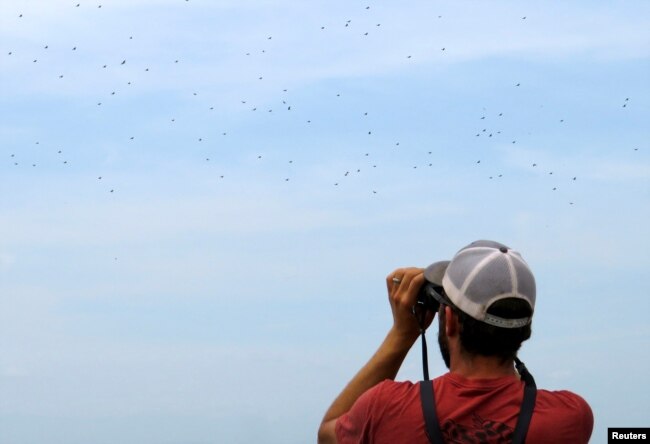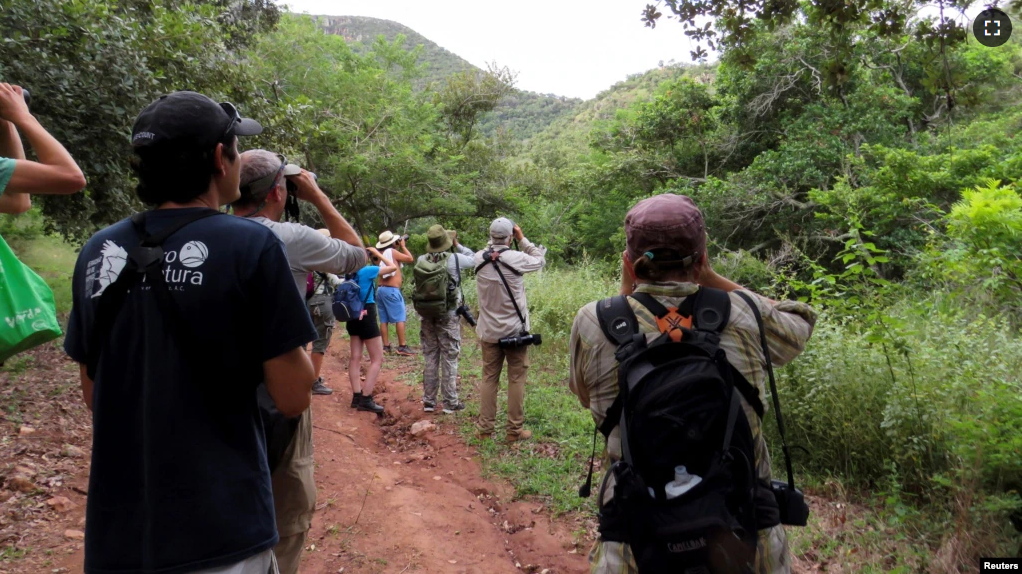Every year, millions of birds fly between Mexico’s Sierra Madre Oriental Mountains and the Gulf of Mexico in an event known as the “river of raptors.”
Many kinds of birds such as hawks, falcons, kites, vultures and eagles travel though the area from August to November to escape cold temperatures.
The event brings hundreds of foreign birdwatchers to the coastal area of Veracruz.
“Many of my clients have been at other famous bird migration sites but say they never have seen anything like” the river of raptors in Veracruz, said Steven Koevoet. He is a birdwatching guide in Mexico. Koevoet has shown visitors places in Yucatan and Veracruz states for over 25 years.
Yet the yearly event has not led to a large increase in ecotourism. Ecotourism is part of the tourism industry that gets people to visit natural places in a way that does not damage the environment.
Critics suggest the lack of increased ecotourism is partly caused by Mexico’s failure to support tourism away from its beach resorts like Cancun and Cabo San Lucas.
“Mexico has a lot of potential because of…its great diversity. But it lacks tourist infrastructure,” said Efrain Castellanos, a biologist in Chiapas state.
High levels of violence and environmentally unfriendly methods are also problems for developing ecotourism in the states of Chiapas and Veracruz.

Violence stopped birdwatching for years in some places, where the activity was an important source of income for local communities, said Vicente Rodriguez. He is a bird specialist at Mexico’s National Commission for the Knowledge and Use of Biodiversity (CONABIO).
Mexico’s national and state tourism ministries did not answer a request from Reuters news agency for comment.
But, environmental groups, universities and farmers in Veracruz are working together to develop ecotourism linked to the yearly bird migration.
Angel Viveros is a member of a family of ranchers near Jose Cardel, a town about 10 kilometers from Mexico’s Gulf Coast in Veracruz. Viveros uses 150 hectares of land owned by his family for activities including birdwatching, horse riding, skydiving and hiking.
Viveros is supported by the non-profit group Pronatura Veracruz, which studies and counts the birds in the yearly migration. He is now receiving hundreds of visitors yearly.
Local coffee producers Cafe de Mi Rancho, Rancho San Fermin and Cafetalera San Felipe offer coffee tastings and educational talks about the importance of birds in spreading seeds.
“A green, bird-friendly stamp for those producers could be the next step,” said Juan Salazar, a professor at University of Cordoba in Veracruz.
One retiree who has been visiting Veracruz since 2002 had this to say. “Apart from feeling the physical emotion, it is like something spiritual … there are no words to describe what it feels like to see the river of birds,” Jose Alejandro Ramirez said.
I’m John Russell.
Carolina Pulice reported on this story for Reuters. John Russell adapted it for VOA Learning English.
_________________________________________________________________
Words in This Story
migrate – v. to move from one area to another at different times of the year
client –n. a person who pays a person or organization for services
resort – n. a place where people go for vacations
potential – n. an ability that someone has that can be developed to help that person become successful
stamp – n. a small piece of paper that you buy and then stick to an envelope or package to pay the cost of mailing it
